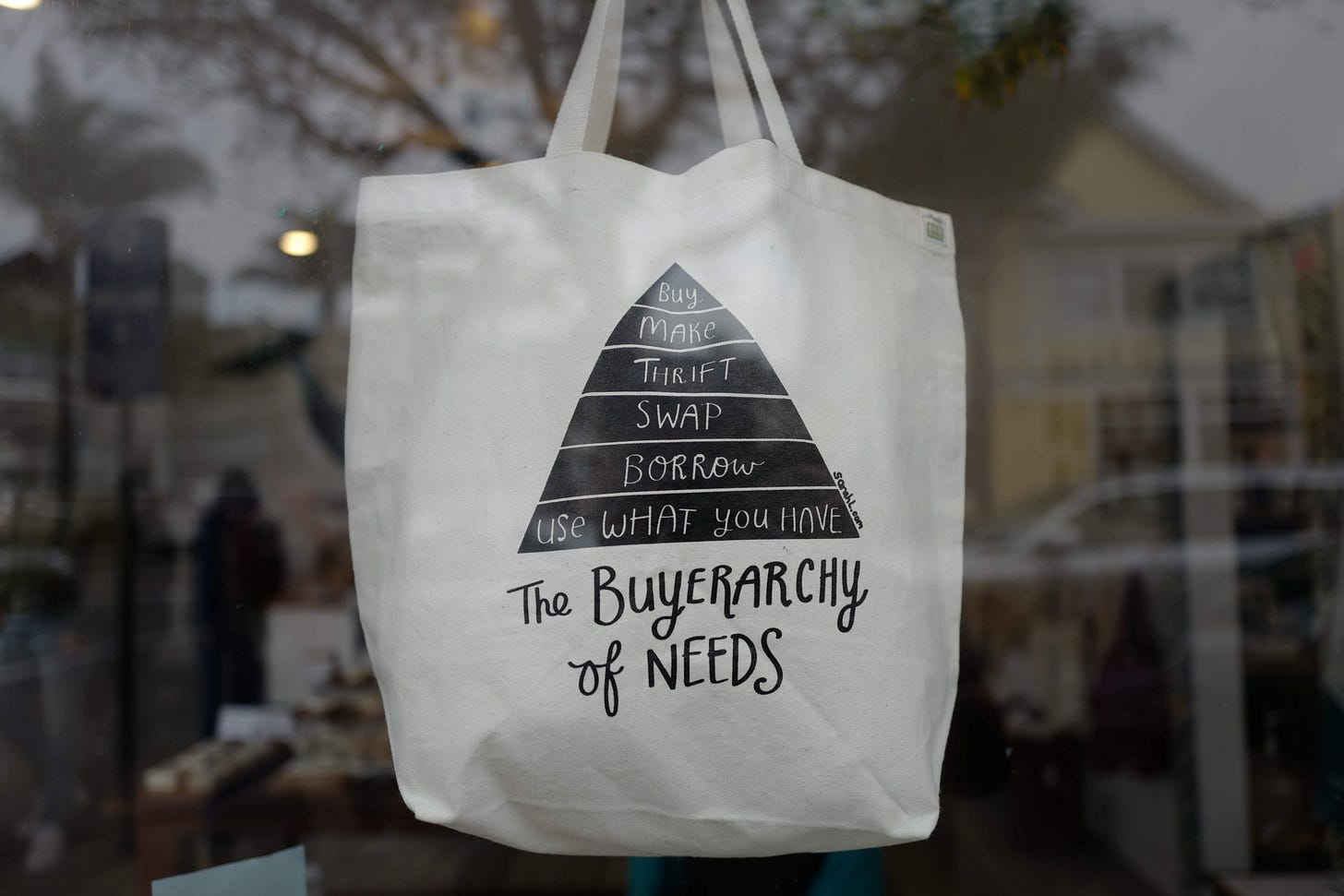A Year Without Shopping
Special Guide: How to prepare for a year with less consumption and more living

In a world where our human value is mostly measured in what we materially own and how many things we can afford to buy, taking a year off the hedonistic treadmill can be a very refreshing, joyful, and transformative experience.
But a year without shopping doesn’t mean complete abstinence, just that we pull back on our, often fabricated, wants for 12 months and refocus on our true everyday needs. The reasons can vary but here are a few of the most common:
Shopping is time-consuming. Shopping has unfortunately become a very destructive pastime when someone is feeling bored or unhappy (retail therapy). It’s better to reschedule that time to do things that are positive in the long run.
Shopping is wasteful. Most of the stuff we buy we never use and end up in landfills. That’s a tremendous waste of natural resources, and a big pressure on our now fragile ecological system. Plus no one really wants a cluttered home.
Shopping is costly. Shopping without clear needs or intentions, so called impulse buying, are very costly; not only for the environment but also the wallet. There are a lots of smart savings to be made if you create a better system.
For the past decade I’ve been actively practicing only buying things that I really need and plan to frequently use. And when I say things, I mean anything beyond food, accommodation, and the most basic and common bills we pay.
The idea is of course not to starve yourself, literary or figuratively, but to refocus your scarce time, attention, and energy on the things that really matter to you. Once doing so, I’m convinced that you’ll discover how to live better with less.
So what might a year without shopping look like?
Well, this year I’ve only bought a dozen items, both new and pre-loved; sold off half a dozen that I didn’t need; repaired a few things; and retired others.
Bought: base layer, socks, tees, ball cap, flip flops, field jacket, shorts, climbing shoes, thermos, and a lunchbox.
Resold: mountain bike, kettlebells, jacket, climbing shoes, and trainers.
Repaired: wetsuit, backpack, and pants.
Retired: tees, socks, and a pair of jeans.
Luckily, this year, the reselling and a few old gift certificates from previous year’s reselling covered all my new and pre-loved purchases with money left for next year. And all my repairs were carried out by Patagonia, for free.
How is this possible?
Over the years I’ve developed a very simple circular system to identify what I really need which has also helped me free up money, time, attention, and energy for better things—for the stuff that really matters in life (books and surfing).
Plan the year. Planning the next 12 months has two advantages: 1) You take control over your time which is very empowering and 2) you commit to certain activities which build self-respect and self-discipline. If you’d like to learn more about planning the year, read my posts on setting clear intentions.
Identify your real needs. Once you know what you plan to do over the next year, you can identify what you really need for these activities. My lifestyle is outdoors and very active, mostly beach, so I need quality gear that works in that environment, from surf shorts to dry bags and warm base layers.
Keep reading with a 7-day free trial
Subscribe to Fewer Better Things to keep reading this post and get 7 days of free access to the full post archives.



